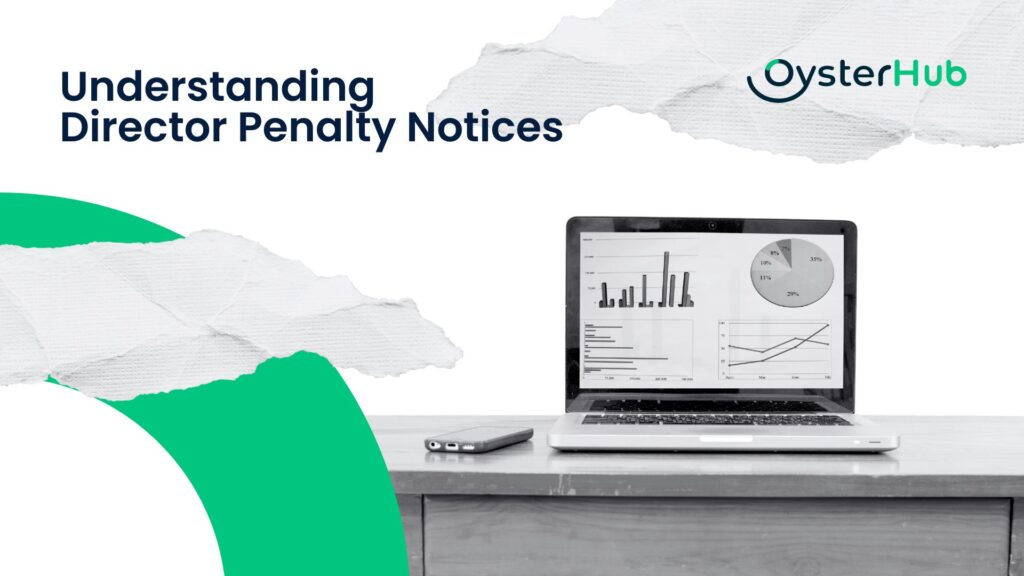Effective Management of Director Penalty Notices (DPNs) is Essential
The ATO is applying pressure to collect debts by sending Director Penalty Notices and Director Penalty Notice Warnings to directors with outstanding ATO debts that do not have payment arrangements in place.
Receiving a Director’s Penalty Notice (DPN) can be a stressful and intimidating experience for any director or business owner. It’s a serious legal notice issued by the Australian Taxation Office (ATO) to hold directors personally liable for the company’s unpaid tax debts, including PAYG withholding and superannuation.
Key takeaway: This article will delve into the various types of Director’s Penalty Notices, the tax obligations of companies and their directors, the process and compliance requirements for DPNs, the consequences of non-compliance, and other essential aspects that directors need to understand to manage DPNs effectively.
Understanding a DPN is crucial for company directors as it directly impacts their personal financial liability. The ATO plays a pivotal role in issuing these notices to enforce compliance with tax regulations. Directors must be proactive in addressing any DPNs to mitigate personal risks and ensure their business operates within legal parameters. This is essential as the ATO can issue notices even to directors no longer serving in the role.
What is a Director Penalty Notice?
There are two main types of Director’s Penalty Notices (DPNs) that directors need to be aware of:
Traditional DPN
A traditional Director’s Penalty Notice (DPN) provides directors with a 21-day window to address unpaid company tax obligations, specifically for PAYG withholding, GST, and superannuation. The amount of the director penalty needs to be cleared within this period. Upon receiving a traditional DPN, directors must take one of the following actions within 21 days to avoid personal liability: the penalty notice gives a director 21 days.
- Pay the outstanding amount of the director penalty to avoid further legal complications.
- Appoint an administrator.
- Initiate liquidation.
If these steps aren’t taken within the specified period, directors become personally liable for the company’s tax debts. This includes amounts for the other directors as well.
What is the difference between a lockdown DPN and a non-lockdown DPN?
Lockdown Directors Penalty Notice (DPN)
The Lockdown DPN is more stringent. Directors automatically incur personal liability if the company’s tax returns are not lodged within three months of their due dates. This type of notice doesn’t provide a grace period like the traditional DPN. The immediate consequence is that directors cannot avoid personal liability even by appointing an administrator or starting liquidation after the notice is issued.
Understanding the differences between these notices is crucial:
- Grace Period. A traditional DPN offers a 21-day period to act, whereas a Lockdown DPN imposes immediate liability, highlighting the two types of director penalty.
- Compliance Deadline to address amounts for the other directors.: The traditional DPN focuses on current compliance, while the Lockdown DPN penalizes historical non-compliance by locking down liabilities if returns aren’t lodged promptly.
It’s important for directors to understand the consequences of each type of notice and how they can navigate their responsibilities effectively to avoid severe financial repercussions. A current or former company director needs to be fully aware of these obligations.
Non-Lockdown Directors Penalty Notice (DPN)
A non-lockdown Director Penalty Notice (DPN) may be served to a Director of a company that has filed its Business Activity Statements (BAS), Instalment Activity Statements (IAS), and/or Superannuation Guarantee Charge (SGC) statements within a three-month period following the due date for lodgement, though the PAYG withholding, GST, and/or SGC liabilities are still unsettled. The notice grants the Director a 21-day window to undertake one of the following actions:
- settle the debt completely; or
- appoint a Voluntary Administrator (VA) for the Company; or
- designate a Small Business Restructuring (SBR) Practitioner for the Company; or
- appoint a Liquidator over the Company.
There is a misconception that Directors can avoid personal liability by entering into a payment plan with the ATO within 21 days, however this is not correct. The payment plan simply allows the Director to repay the liability by way of instalments, however the Director becomes personally liable for the whole debt after the end of the 21-day period. In the event the Company (or the Director) defaults on the payment plan, the ATO can commence proceedings against the Director personally, seeking recovery of the relevant tax debt(s). The ATO can issue formal recovery notices as well.
Consequences of Each Type of Notice
Upon receiving a traditional DPN, directors must act swiftly within 21 days to mitigate personal risk. Failure to do so leads to enduring personal liability for unpaid taxes, where one director is personally liable for the debt.
In contrast, a Lockdown DPN leaves no room for remediation post-issuance; directors become instantly liable if compliance deadlines were previously missed. The stringent nature of Lockdown DPNs means that maintaining timely lodgment of returns is critical.
For those struggling with compliance or facing potential penalties, Rescue Catchup Accounting can be an invaluable service. This tailored package from Oyster Hub ensures timely adherence to tax obligations, assisting businesses in avoiding penalties associated with DPNs. This can prevent directors from becoming personally liable for a penalty. Additionally, exploring effective tax debt negotiation strategies can offer practical solutions in addressing outstanding debts with the ATO.
Can a director be made personally liable for company tax debts by a DPN?
Directors have to deal with a complex system of company tax obligations, which directly affect their personal liability under a Director’s Penalty Notice (DPN).
Key Company Tax Obligations
- PAYG Withholding: Directors are responsible for making sure the company deducts the right amount of tax from employee wages and pays it to the ATO.
- GST (Goods and Services Tax): Companies have to collect GST on behalf of the government and pay it accordingly. If they fail to do so, directors can be held personally responsible.
- Superannuation Obligations in relation to being personally liable for a penalty.: Directors need to ensure that they make superannuation contributions for employees within the given deadlines.
Not meeting these tax obligations can result in a DPN being issued, which would make directors personally liable for any unpaid amounts. This highlights how important it is to manage finances carefully and submit all necessary returns on time.
3 Issuance, Compliance, and Key Considerations for Director’s Penalty Notice

Step-by-Step Process of DPN Issuance and Compliance
1. Detection of Non-Compliance:
The ATO identifies unpaid tax obligations such as PAYG withholding, GST, or superannuation.
2. Issuance of DPN:
A Director’s Penalty Notice is issued to the director(s), detailing the unpaid amounts and specifying the type of notice (21-Day DPN or Lockdown DPN).
3. Delivery:
The DPN is sent to the director’s ASIC registered address, making it essential to receive a director penalty notice on time. Ensuring this address is up-to-date is crucial as non-receipt of a director penalty notice due to an incorrect address does not exempt directors from liability.
4. Response Period:
For a 21-Day DPN, directors have 21 days to take action to avoid personal liability. Lockdown DPNs impose immediate liability if compliance requirements are unmet within specific timeframes.
Role of Lodgment History
A company’s lodgment history plays a pivotal role in whether the ATO may decide to issue director penalty notices.
- Timely Lodgments within 3 months: Consistently lodging tax returns on time can prevent the issuance of Lockdown DPNs.
- Compliance Records: Poor lodgment history increases scrutiny and risks receiving harsher notices, potentially making one director remain liable for director penalties.
Practical Tips for Timely Compliance
1. Regularly Update ASIC Address: Ensure that the company’s director penalty notices are correctly received.
- Ensure your ASIC registered address is current to receive notices promptly.
2. Maintain Accurate Records:
- Keep thorough records of all tax lodgments and payments.
3. Act Immediately Upon Receipt:
- Seek professional advice within the 21-day window upon receiving a 21-Day DPN.
4. Monitor Company Tax Obligations:
- Regularly review outstanding tax obligations and ensure timely payments.
5. Professional Assistance with handling director penalty notices:
- Engage with insolvency practitioners or tax advisors specialized in handling DPNs for guidance on compliance strategies.
Understanding these steps helps directors mitigate risks associated with Director’s Penalty Notices, ensuring they navigate compliance effectively and sustain their business operations with peace of mind.
Are there any defences for a director who receives a Director Penalty Notice?

Available Defences
Directors have several defences to challenge a Director’s Penalty Notice (DPN). These include:
1. Reasonable Steps Defence in response to a director penalty notice.: Directors must prove they took all reasonable steps to:
- Ensure the company paid the due amounts to prevent receipt of a director penalty notice.
- Set up a payment arrangement with the ATO.
- Appoint an administrator or initiate liquidation.
2. The effectiveness of this defence depends on documentation and the timeliness of actions taken.
3. Illness or Incapacity: If a director was unable to manage the company due to illness or another valid reason, they might avoid liability. This defence requires substantial medical evidence and a clear link between the illness and their inability to fulfil duties.
Resignation as a Director
Resigning as a director does not necessarily absolve one from personal liability for the company’s tax debts, especially if they receive a director penalty notice. Important points to consider:
- Timing of Resignation: Liability for unpaid taxes can still apply if the resignation occurs after the debt has accrued. Directors remain liable for debts incurred while they held their position.
- Notification and Documentation: Properly notifying ASIC about the resignation is crucial. Failure to do so can result in continued liability under director penalties.
- Post-Resignation ActionsEven after resigning, former directors may need to demonstrate that they took reasonable steps to address tax obligations during their tenure to avoid director penalties.
Seeking Tax Accountant Help
By understanding these options and seeking timely professional advice, directors can better manage their risks associated with DPNs.
- Expert Guidance on director penalty notices.: Help navigate complex tax laws and identify viable defences.
- Strategic Planning: Assist in restructuring or other measures to mitigate personal risk.
- Documentation Support: Ensure all necessary paperwork and evidence are well-prepared and submitted promptly.
- Review of Business Accounting:
- Finding errors that have possibly let to large debt.
Take control of your situation when dealing with DPNs. By familiarising yourself with ways to protect, reduce, and comply, you can successfully handle the potential dangers that come with Director Penalty Notices. This offers a good place to begin. If you need tailored advice and professional assistance, contact Oyster Hub’s tax accountants now or reach out to us at (02) 9158 5444.
ATO's Enforcement Approach, Legislative Framework, and Case Studies
The Australian Taxation Office (ATO) takes a strict and methodical approach to enforcing Director’s Penalty Notices (DPNs). Their goal is to ensure that businesses comply with their tax obligations by targeting those who repeatedly fail to meet payment agreements, have significant unpaid taxes, or actively avoid communicating with the ATO. DPNs are used as a tool to hold directors personally responsible for their company’s tax liabilities, with a focus on PAYG withholding, GST, and Superannuation Guarantee Charge (SGC) debts.
ATO's Enforcement Approach
The ATO follows a clear and honest process for recovering debts, which consists of 4 key stages: Prevention, Early Intervention, Firmer Action, and Stronger Action. The majority of taxpayers pay their debts promptly or soon after they are due. Failure to address your ATO debt will result in a strict approach towards businesses that do not comply with payment of tax debts, especially those entities that do not meet their obligations.
- Consistently fail to meet ATO payment agreements
- Escape financial responsibilities by closing down companies and establishing new business entities (phoenix activity)
- Are struggling with mounting debt and showing no signs of being able to fulfill their responsibilities.
- Avoiding contact with the ATO
It is essential for directors and companies to regularly update their payments and contributions and stay in communication with the ATO regarding their status.

Legislative Framework for DPNs
The legislation governing DPNs includes key provisions from the Income Tax Assessment Act 1936 and Section 269-25 of Schedule 1 of the Taxation Administration Act 1953. These provisions outline the conditions under which directors can be held personally liable for their company’s tax debts.
Recent updates to the law have expanded the scope of Lockdown DPNs since June 2012. Now, directors can also be held liable for Superannuation Guarantee Charge (SGC) debts, and if they fail to pay their obligations on time, their access to PAYG withholding credits may be restricted.
Case Studies: Real-Life Examples of DPN Impact
Looking at actual cases can help us understand how DPNs work in practice and the consequences they can have:
- Sandra’s Scenario: Sandra was a director of Marbles123 Pty Ltd when she received a Lockdown DPN. The reason behind this was her failure to lodge BAS within three months. Even though she tried to negotiate repayment terms later on, Sandra ended up being personally liable for the company’s tax debt because she didn’t comply with the lodging requirements.
- John’s Example: John found himself dealing with a 21-Day DPN after his company accumulated a significant amount of GST debt. However, he was able to avoid personal liability and further legal consequences by quickly entering into a payment arrangement within the given timeframe.
These examples emphasize how important it is for directors to:
- Meet their tax obligations on time
- Stay compliant with reporting and lodgment requirements
- Actively engage with the ATO when facing difficulties
By doing so, directors can minimize the risk of personal financial harm caused by DPNs.
Conclusion
Understanding Director’s Penalty Notice laws and implications, including the specific amounts of the director penalties that were due. is crucial for company directors who may become personally liable for a penalty. Staying vigilant about company tax compliance helps avoid DPNs and mitigates personal risk. Seeking professional advice from insolvency practitioners who specialize in DPN cases ensures informed decision-making and effective management of potential liabilities associated with director penalties.
Key Takeaways:
- Vigilance in tax compliance is essential.
- Professional advice can provide critical support.
By maintaining diligence and leveraging expert assistance, directors can safeguard their interests and ensure smoother business operations.
FAQs (Frequently Asked Questions)
A Director Penalty Notice (DPN) is a notice issued by the Australian Tax Office (ATO) to company directors, holding them personally liable for certain unpaid company taxes, such as PAYG withholding and superannuation guarantee charge.
The ATO issues a director penalty notice when the company fails to pay its tax obligations within the stipulated time frame, often within 3 months of the due date. This is a measure to recover the director penalty for unpaid taxes.
If you receive a DPN, you must take immediate action within 21 days from the date the notice is given. Your options include paying the debt in full, placing the company into voluntary administration, or beginning liquidation proceedings.
Yes, there are two types of director penalty notices: a Non-Locked DPN, which allows for the debt to be remitted if action is taken within 21 days, and a Locked DPN, which holds directors personally liable regardless of any subsequent actions taken.
To avoid receiving a DPN, ensure that the company meets its tax obligations in a timely manner, and maintain accurate and timely reporting of PAYG withholding and superannuation contributions.
If the company pays the debt in full, the directors and the company’s obligations under the director penalty notice will be resolved, removing any personal liability linked to the notice.
Yes, if you were a director when the tax liability arose, you could still receive a DPN even if you are no longer a director at the time the ATO issues the notice. This is true for both a current or former company director.
Failure to address a DPN within the specified 21 days could result in the ATO taking action to recover the director penalty amount from your personal assets, making you personally liable for the company's unpaid debts.
Yes, recent directors may be held liable if they become a director and the company has existing unpaid tax liabilities that are reported to the ATO within 3 months of the due date. It is crucial for new directors to ensure the company’s tax compliance to avoid personal liability. Both a current director and any former directors share this responsibility.
Placing the company into voluntary administration or liquidation within the 21-day period can reduce the director penalty amount or satisfy the notice requirements, thus limiting your personal liability for the company’s unpaid taxes.




















